#ski team sweden xc
Note
Sweden did very well in the XC relay, their depth on the women's side is scary. USA finally did the sensible thing and put their big guns on the classic legs which they should have done AGES ago. The big time losses are on those legs. Using Diggins last is a waste if they are then miles behind. Germany do so well because their strength (in this generation) is classic same with Finland in the past they've been sucked along in freestyle to medals by dropping everyone in the classic.
I'm intrigued as to what will happen in the Biathlon this season given how the field seems to have really bunched together with the retirement of so many big guns. I think possible Vittozzi is she can stay healthy this season has a real chance given she now seems to have strong ski speed and strong shooting. Obergs are currently blowing hot and cold. Tandrevold looks good. Knotten looks to have stepped up. Preuss has the immune system of a toddler so her staying healthy enough to compete for the big globe would be a miracle to end all miracles. Looks set to be an close season with lots of winners and twists and turns. Equally the wax situation looks be having an impact on ski times too and creating a bunching effect there too so that could also play a big part especially on courses with very unpredictable snow or lots of fresh snow.
great summary of the xc race this morning! totally agree and it was such an interesting race to watch. norway were definitely underwhelming though and I was also a bit surprised sweden 2 didn't do particularly well, though with three big names out I imagine that team would've looked very different
biathlon is very interesting too! there definitely isn't a clear frontrunner
0 notes
Text
BREAKING NEWS 💥 Skåne Power 💥 Since year 1658 Skåne has been occupied by Sweden 🇸🇪 This is one of the many reasons why we made a plan to liberate the xc skiing princess of Skåne to Danish territory again 😎🤣 Both as a plaster on the wound in terms of the territory, but also as revenge for the spanking we have taken this season from the Swedish big brother on the xc skis 🤣😝
On a more serious note, we warmly welcome Ebba Johansson from @skiteamskane whom we met at Vasaloppet 2023 around Mora. We know that she also comes from a region where rollerskis are a necessity to get functional ski training as in Denmark, hence we have a lot in common. Also we want to support Ebba in trying the long distance skiing along with her goals in other parts of xc skiing without any pressure. We will be offering a team where there are no stressful expectations, the fun part should be the most important and hopefully help in continued motivation for a young athlete like Ebba.
Welcome 🤗
#winter sports#xc skiing#xcski#langrenn#langrend#rollerski#danishskimarathonteam#rollerskiing#rollerskis
0 notes
Photo


National Team for Falun, February 8-9th 2020
Program Falun
Saturday February 8th: Sprint, Classic
Sunday February 9th: 10/15 km Freestyle Mst
Women, sprint
Maja Dahlqvist, Falun-Borlänge SK
Johanna Hagström, Ulricehamns IF
Moa Lundgren, IFK Umeå
Emma Ribom, Piteå elit
Jonna Sundling, Piteå elit
Linn Svahn, Östersunds SK
National squad*
Anna Dyvik, IFK Mora SK
Tilde Bångman, Offerdals SK
Maria Nordström, Borås SK
Moa Olsson, Falun-Borlänge SK
Alicia Persson, Stockviks SF
Elina Rönnlund, IFK Umeå
Evelina Settlin, Hudiksvalls IF
Linn Sömskar, IFK Umeå
Jennie Öberg, Kalix skidklubb
Women, distance
Ebba Andersson, Sollefteå skidor IF
Charlotte Kalla, Piteå elit
Moa Lundgren, IFK Umeå
Emma Ribom, Piteå elit
Elina Rönnlund, IFK Umeå
Jonna Sundling, Piteå elit
National squad*
Maja Dahlqvist, Falun-Borlänge SK
Anna Dyvik, IFK Mora SK
Johanna Hagström, Ulricehamns IF
Frida Karlsson, Sollefteå skidor IF
Moa Molander Kristiansen, Falun-Borlänge SK
Maria Nordström, Borås SK
Moa Olsson, Falun-Borlänge SK
Evelina Settlin, Hudiksvalls IF
Linn Sömskar, IFK Umeå
Men, sprint
Marcus Grate, IFK Umeå
Calle Halfvarsson, Sågmyra SK
Johan Häggström, Piteå elit
Teodor Peterson, Sågmyra SK
Oskar Svensson, Falun-Borlänge SK
Viktor Thorn, Ulricehamns IF
National squad*
Gustaf Aflodal, Offerdals SK
Jens Andersson, Kalix SK
Martin Bergström, Piteå elit
Gustav Eriksson, IFK Mora SK
Pontus Hermansson, SK Bore
Hugo Jacobsson, Falun-Borlänge SK
Olof Jonsson, Trillevallen SK
Anton Persson, SK Bore
Karl-Johan Westberg, Borås SK
Men, distance
Calle Halfvarsson, Sågmyra SK
Johan Häggström, Piteå elit
Daniel Richardsson, Hudiksvalls IF
Oskar Svensson, Falun-Borlänge SK
Viktor Thorn, Ulricehamns IF
Karl-Johan Westberg, Borås SK
National squad*
Fredrik Andersson, Sollefteå skidor IF
Simon Andersson, Falun-Borlänge SK
Martin Bergström, Piteå elit
Filip Danielsson, SK Bore
Axel Ekström, IFK Mora SK
Jonas Eriksson, IFK Mora SK
Fredrik Jonsson, Hudiksvalls IF
Marcus Ruus, Åsarna IK
Björn Sandström, Piteå elit
*Since the competitions are held in Sweden, the team gets an additional quota of nine skiers for each race.
#xc skiing#cross country skiing#ski team sweden xc#skiteamswexcupdates#world cup#xc world cup#cross country world cup#svenska skidspelen#svenska skidspelen 2020#a-laget#team bauhaus#team svenska spel#maja dahlqvist#johanna hagström#moa lundgren#emma ribom#jonna sundling#linn svahn#anna dyvik#tilde bångman#maria nordström#moa olsson#alicia persson#elina rönnlund#evelina settlin#linn sömskar#jennie öberg#ebba andersson#charlotte kalla#frida karlsson
1 note
·
View note
Text
i can't believe discovery is robbing me of the footage of calle being a winner again 😭😭
#he got help from jonna but STILL#calle halfvarsson#cross country skiing#xcs#xc skiing#sweden#team sweden
2 notes
·
View notes
Photo
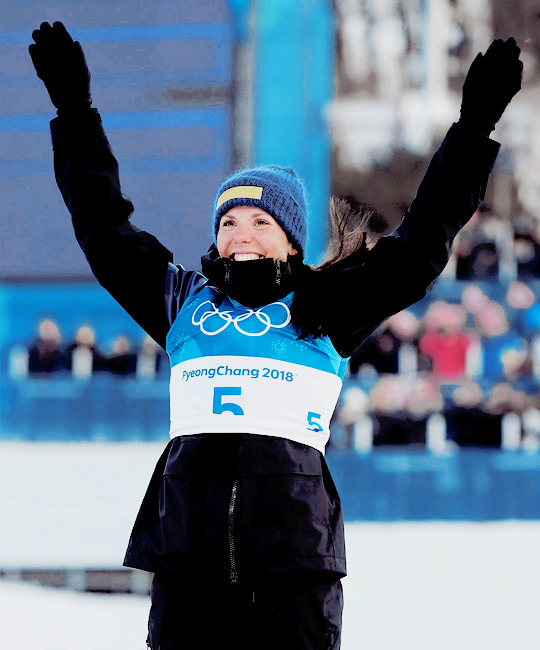

45 notes
·
View notes
Text
Beijing Games 2022 - EU dominance
A.] Norway/ Russia/ Germany/ Sweden/ Austria - 132 medals (49 gold) 230 mil
A1.] Norway - 37 medals (16 gold, 8 silver) 05 mil
14 biathlon, 8 xc ski, 8 nordic combine/alpine, Speed skate/ jump/ curl 5, snowboard 1. Men - 25, Johannes Boe 3 gold/1 silv, Tarjei Boe 3m, Marte Olsbu 3g/2b, Therese Johaug 3g, Johan Klaebo 2g/1b, Joerger Graabak 1g/1s, Alek Kilde 1g/1s, Birk Ruud Free Ski
A2.] Russia - 32 medals (6 gold, 12 silver) 145 mil
11 xc ski, 6 fig skate,7 biathlon/free ski, 4 speed skate. Men 17, Alex Bolshunov 3g/2m, Alex Terentev 3m, Natalia Nepryaeva 3m, Anna Shcherbakova 2g, Evgeniya Tarasova/Morozov 1, Biathlon teams 3, Hockey 1s
A3.] Germany - 27 medals (12 gold, 10 silver) 60 mil
7 bobsled, 9 luge/skeleton, 5 nordic com/ski jump, 4 xc ski/ biathlon. Franceso Friedrich/Thorsten, Laura Nolte/Levi, Johan Ludwig, Natalie Geisenberger, Chris Grotheer, Denise Herrmann
A4.] Sweden - 18m (8 go, 5 sv) 10 mil
A5.] Austria - 18m (7go, 7sv) 09 mil
B.] Canada - 26 medals (4 gold, 8 silver) 38 mil
6 snowbo, 9 speed/track, free ski 5, bobsled/ curl 3, hockey 1. Max Parrot 1g/1b, Eliot Grondin 1s/1b, Meryeta Odine 2b, Isabelle Weidemann 3m, Steven Dubois 2m, Hockey g,
C.] America - 25 medals (8 gold, 10 silver) 330 mil
8 free ski, 6 snowbo/ xc ski, 6 bobsled/speed, 3 fig skate, 2 alpine/hockey. Alex Hall 1g, Lindsey Jacobellis 2g, Chloe Kim 1g, Nathan Chen 1g/1s, Madison Hubbell/Donohue 1b, Elana Meyers 1s/1b, Jessie Diggins 1s/1b, Hockey 1s, Mikaela Shiffrin/ Shaun White 0
D.] Japan - 18m (3 go, 6sv) 125 mil
E.] China - 15m (9 go, 4sv) 1.4 bil
0 notes
Photo
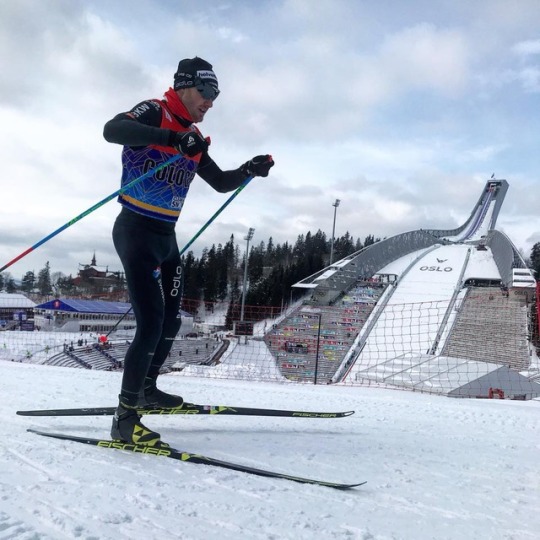
dariocologna: Getting ready for the legendary 50km in Oslo ✊🙏
#❤❤❤#well i'm not looking forward to this race#i mean really#team sweden looks like shit#dario & marathon is the worst story of this world#lol#men's xcs sucks#quite often#cross-country skiing#team switzerland#suixcs#dario cologna
0 notes
Text
Snow Queen: A Cold Pursuit of One’s Finnish Roots, in the Dead of Winter (w/Video)
I have a thing for snow. When other people head south on vacation, I go north. I come by it honestly. I was born and raised in Northern Ontario, and my mom is a Finn. So when editor in chief Ed Loh needed someone to fly to the top of Finland and breach the Arctic Circle to test Nokian’s newest tires, the formulation of a plan began.
Snow, tires, cars, reindeer, northern lights, and saunas—time for a good old-fashioned Motor Trend road trip. Spoiler alert: Things got personal along the way.
Nokian Tyres is a big deal in Finland. The company traces its history back to the founding of the Finnish Rubber Works in 1898, and it invented the winter tire in 1934. Today Nokian has a 1,730-acre winter test site near Ivalo, 180 miles north of the Arctic Circle.
Nokian is a household name in Europe when shopping for winter tires, but in order to grow it must enter the mainstream with new lines of all-season and all-weather tires. Hence its desire to raise its profile in the U.S.
New tires have been developed for North America, and Nokian is building a $360 million tire plant in Dayton, Tennessee, with ambitious goals of doubling sales in five years.
So we headed to Lapland (a region covering the northern third of Finland) for a taste of what this small player—$1.7 billion in sales in 2016 versus $32.5 billion from giant Bridgestone—with big plans has to offer.
Our Motor Trend trio included videographer Cory Lutz—a fellow Canadian in danger of getting soft after years of living in Southern California—and photographer Robin Trajano, who was born in the Philippines, now lives in L.A., and could provide thin-blooded comic relief in these frigid arctic climes.
We rendezvous in the capital of Helsinki and hop a 1.5-hour flight to the northernmost airport in the European Union. “Welcome to Ivalo,” the airport sign says, showing a current temperature of minus 4 degrees Celsius (25 degrees Fahrenheit). No big deal; my hometown in Ontario has dipped to minus 40. Trajano, however, is giving me sideways shade for putting him in this icebox. Eh, he’s young and tough.
“Kiitos” I say under my breath, Finnish for “thank you” and a remnant of the Finnish I knew as a child listening to my mother talk to her mother. I am finally in a place long on my bucket list. I swallow hard past the lump in my throat.
In Ivalo, a former gold-mining town that is now a winter recreation destination, you can snowmobile to the highest point in Finland and see Russia. Finland is celebrating the 100th anniversary of its independence from the Russian Republic; they haven’t always been the best of neighbors.
Nokian is the only tire manufacturer with a permanent winter testing facility. Nicknamed “White Hell,” the Ivalo Testing Center has slalom and handling courses, a 1.0-kilometer (0.6-mile) speed run on the lake, a rally track for drifting, hills to test traction, an SUV course through the reindeer-populated woods, and an ice hall housing 2,300 feet of natural ice. There are more than 30 tracks covering 62 miles on a variety of ice and snow conditions. In this sprawling complex, Nokian tests 20,000 tires a year from November to May. Every day, results from icy ovals are sent back to corporate headquarters in the pursuit of the best beads, compounds, treads, and studs to improve grip.
Nokian is not alone in its quest for winter tire supremacy. Michelin, Goodyear, and Bridgestone now have small test sites near Ivalo, Hankook recently built a facility, and there is an independent facility the industry shares.
In Finland everyone knows Nokian, which has its headquarters and a tire plant in the city of Nokia, near Helsinki. Nokian split off from conglomerate Nokia (best known for cell phones) in 1988.
Winter tires are mandatory across Scandinavia, Russia, and other northern countries. As a result, the Nokian brand and its Hakkapeliitta tire have become synonymous with excellent winter tires. (“Hakkapeliitta” was a Finnish light cavalry unit during the 30 Years’ War. The name refers to their fearsome roar as they charged into battle.)
The brand is also known in Quebec, another place where winter tires are mandatory. But Nokian is largely obscure on this side of the Atlantic—beyond users such as the Michigan State Police and wonky Hakkapeliitta enthusiasts. The push to increase awareness is now the responsibility of new CEO Hille Korhonen.
For our Finnish excursion we are joined by Nokian PR rep Dan Stocking, a Michigan native who grew up smelling rubber at his family tire shop. Among the Finns who meet us at Ivalo Airport is Matti “Mr. Tire” Morri, a Nokian technical expert who has spent the last 27 winters in Lapland but has never seen it in the summer. Growing up, he cross-country skied a mile-plus to school every day on a track his father groomed for him. He still likes to end his day with a kick-and-glide on an XC trail.
We pile our gear into cars. Morri whips away at breakneck speeds on what we later discover are roads of hard-packed snow compacted to the consistency of ice. Our studded Hakkapeliittas so completely grip the low-mu surface that we are caught unaware when we get out of the cars. We promptly windmill our arms as we struggle to keep our balance.
Among the perks of Lappish life: Our rooms at the Hotel Tunturi in Saariselkä have private saunas. The Finns invented the sauna, and I was eager to compare them to the traditional wood-fired saunas in Canada in which we steam and then jump in a lake or roll in the snow. And conveniently, my room at the Tunturi has a snow-covered patio. We also are invited to join Nokian dealers and executives in a corporate-building communal sauna and dip, but I prefer to limit my team-building exercises to Motor Trend Of The Year testing.
Another Finnish delight: As we walk back from dinner, crunchy packed snow underfoot, we see the northern lights. The scientific explanation for the aurora borealis is charged particles hitting the Earth’s magnetic shield and releasing energy in bands of colorful light across the sky. Northern Finland is in the “Aurora Belt,” where the lights are most frequently seen as leaping iridescent lime spikes, flaming pink shoots, or bright purple curtains in stark contrast to the inky black sky above the Arctic Circle. By contrast, back home on Ontario’s 49th parallel, my last sighting displayed black and white piano keys being played across the sky like beams from a flashlight in need of new batteries.
Day 2
We are back on frozen rural roads heading north to Inari through areas where reindeer farmers herd via snowmobile. Our destination is Lake Pasasjärvi, also known as White Hell Area 2. A fleet of Audis awaits us.
To escape the minus 20 C (minus 4 Fahrenheit) cold, we hop in a yellow AWD RS 4 with studded Hakkapeliitta 9 tires to try the slalom and handling courses. There also are areas for drifting and collision avoidance. Although drifting on the slippery stuff is tempting, the actual goal is to drive on the edge of control and not drift. The combination of the car’s traction control and the grip of the tires almost stops the vehicle completely until it regains control and accelerates again. Same excellent grip in a red RS 5 with studded tires.
A blue RS 6 is doing speed runs on the lake. Nokian has the world record for fastest car on ice with the RS 6 hitting 335.7 km/h (208.6 mph) on the Gulf of Bothnia wearing studded Hakkapeliitta 8s. By comparison, we are mere amateurs. Bouncing along the uneven surface at autobahn speeds, I repeat the winter-driving mantra, slow hands, slow hands. We back off at 100 mph, knowing the car and tires could easily have done more.
To test the new SUV tires we try Audi Q5s with studded tires but also with the nonstudded Hakkapeliitta R2 SUV winter tires. Even without studs, the traction on sheer ice is remarkable. The vehicle prefer to stop rather than drift. There are occasions I’m convinced of an imminent kiss with a snowbank, but the tires pull the SUV back on track time after time.
On the way to lunch at the Kultahippu restaurant, we stop abruptly on the crest of a hill. In the not so far distance, we spy Murmansk, Russia. We taunt our grumpy neighbors with our American, Canadian, and Finnish flags.
Finnish cuisine is influenced by Germany, Sweden, and Russia. But Lapland is influenced by what is available. We have a fine lunch of traditional reindeer stew (sliced reindeer strips in gravy over mashed potatoes with lingonberries and pickle spears). Dinner that night: the same reindeer stew but with a third pickle spear.
I learn Finnish men drink giant glasses of milk with their meals. I also learn that pulla (the Finnish coffee bread I grew up with) is not on every table. In fact, I never found it during my travels. Crepelike Finnish pancakes were also scarce, and the fish stew I know as kalamojakka is apparently not a Finnish word at all! “Oh, yes, in Finland it is called kalakeitto,” my mom tells me after I get home.
With bellies full of Dancer and Prancer, we dash through the rest of White Hell before calling it a day.
Day 3
We’re up early to start our road trip south. It’s still March, but the days have started getting longer—with sunrise about 7 a.m. and daylight lasting until almost 6 p.m. in this land of the midnight sun. We have a pair of rental cars: a 2016 Volvo V40 fitted with studded Hakkapeliitta 9 tires and a 2017 Volvo XC90 with the R2 SUV tires. Our ultimate destination: Nokian’s headquarters, which employs about 1,500 people at its R & D facilities, tire manufacturing plant, and immense logistics center.
The V40 will finally be sold in the U.S. when the next-generation 40 series launches, starting with the XC40 early next year, so we were curious to spend time in its European predecessor. We have a bare-bones Volvo V40 T2 with cloth seats and no navigation system. Our support vehicle is a Volvo XC90 D5 with a two-tone leather interior and soft-pore wood. Compared with Motor Trend’s long-term XC90 T6 Inscription with the 2.0-liter gas engine, the diesel in the D5 provides nice, smooth acceleration. It also means we got to pay 1.426 euros/liter (about $1.70) for diesel rather than €1.545 for regular gas or €1.609 for premium gas.
Our new Finnish friends greet our drive route with skepticism—they attempt to persuade us to book a flight for part of it. What they underestimate is how much driving, photography, and video from thigh-deep snow we can pack into a day. What we underestimate is travel time: Speed limits are reduced in winter, coinciding with the December 1 to March 31 mandatory winter tire period.
We leave Saariselkä and head south on E75. Finland is a country of 5.5 million people occupying 151,000 square miles. It looks exactly like Northern Ontario—I swear I have not left home—with 190,000 lakes, high snowbanks, and packed-snow roads that don’t see pavement until spring. The same pine, spruce, and birch trees mean we see the same barn wood as we cruise through Finland’s rural environs. They also have the same national animal: the mosquito.
Our studded tires perform so well in the deep snow that we can whip the V40 around to double back for photography. It is proving to be a sturdy vehicle and blends in with the other small cars and SUVs that dot the roads—with Volvo, Audi, VW, Mercedes, Mazda, Honda, and Nissan nameplates being the most common. Finland has the most vehicles per capita in the world, and many wear extra headlights to spot reindeer during the long, dark winter months.
We stop for a late lunch in Rovaniemi, hometown of Santa Claus. But its history is not the stuff of children’s books. Snow covers the ground pockmarked from World War II bombings by the Russians and the scorched-earth retreat of the Germans. The local airport is a former Luftwaffe airfield.
We visit the Arktikum Lapland museum, the gateway to the north. You enter from the south, and the structure disappears underground like an animal burrowing under the frozen tundra for warmth. Inside are scenes of Finnish Lapland and Arctic life: fishing, hunting, a cold room, and a northern lights theater.
Our trip then meanders west to the border with Sweden and the Gulf of Bothnia.
The weather gets milder as we cross the Arctic Circle—where we also cross the freezing mark. It is easy to forget we have studded tires when the pavement bares itself, but we are reminded in the hotel parking garage in Oulu with a staccato snap, crackle, and pop underfoot. The Hakkapeliitta 9 has new stud technology. There are more studs, including some in the center of the tire, and the corners of the studs are cut so the tire doesn’t hit the ground before the stud does. But the studs are also smaller, lighter, and designed to spread out on impact to help protect the occasional exposed patch of pavement.
In Oulu we walk under fat snowflakes to a French bistro for dinner. Robin rejoices; he has had enough reindeer for one trip. Once again, my room has a sauna. I am in heaven.
Day 4
We are up with the sun as sleet swirls outside our windows. We continue south on E8 along the coast to Vassa, where the scenery is marked with elevation changes and rock outcroppings. I choke up; Vassa is the birthplace of Signe Kujanen, my mummu (grandmother). She is the one who introduced me to pulla and taught my mom how to make the incorrectly named kalamojakka. Listening to her, I learned Finnish as a toddler. My first car was the 1972 Chevy Impala she willed me. We gave it a Finnish accent: It was known to everyone as
from PerformanceJunk WP Feed 3 http://ift.tt/2ioPhlL
via IFTTT
0 notes
Photo




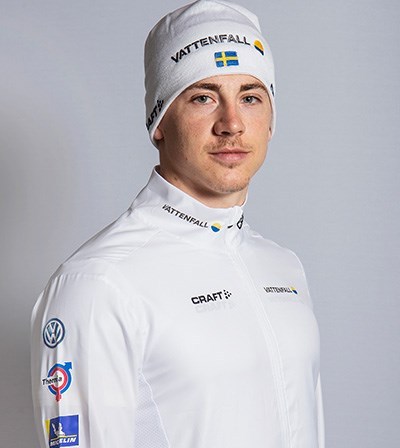


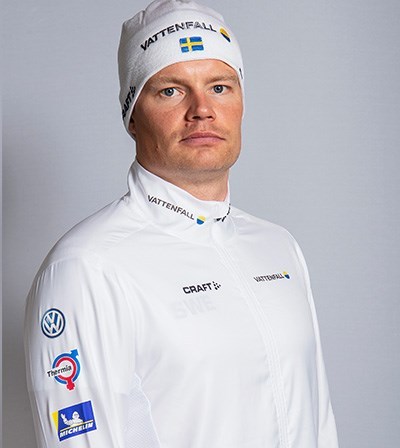
National Team 2019/2020 — Team Bauhaus, Men
Team Bauhaus is for skiers who are on the verge of being included in A-laget. The team consists of skiers who are of age 23 or older. Thanks to being sponsored by Bauhaus the team can participate in all of A-laget’s training camps and gatherings. The skiers also have the same coaches as A-laget.
Martin Bergström, born 1992
Piteå elit SK
Axel Ekström, born 1995
IFK Mora SK
Marcus Grate, born 1996
IFK Umeå
Simon Lageson, born 1994
Falun-Borlänge SK
Anton Persson, born 1995
SK Bore
Marcus Ruus, born 1994
Åsarna IK
Björn Sandström, born 1995
Piteå elit SK
Karl-Johan Westberg, born 1992
Borås SK
#xc skiing#cross country skiing#national team#swedish national team#ski team sweden xc#team bauhaus#martin bergström#axel ekström#marcus grate#simon lageson#anton persson#marcus ruus#björn sandström#karl-johan westberg
1 note
·
View note
Photo


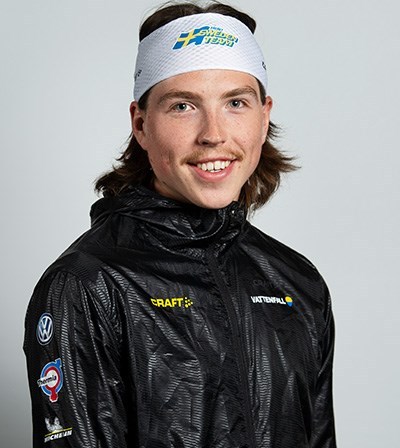
National Team 2020/2021 — Team Bauhaus, Men
Fredrik Andersson, born 1998
Piteå elit SK
Marcus Grate, born 1996
IFK Umeå
William Poromaa, born 2000
Åsarna IK
#team bauhaus#xc skiing#cross country skiing#ski team sweden xc#skidlandslaget#fredrik andersson#marcus grate#william poromaa
0 notes
Photo
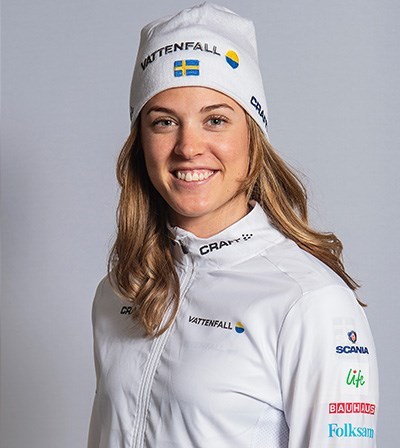


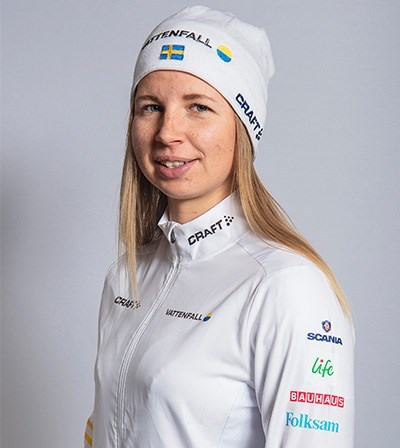
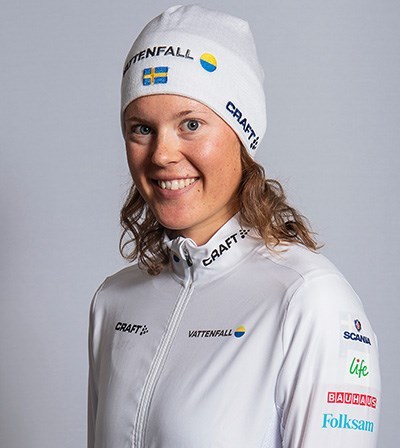
National Team 2020/2021 — Team Bauhaus, Women
Anna Dyvik, born 1994
IFK Mora SK
Johanna Hagström, born 1998
Ulricehamns IF
Moa Olsson, born 1997
Falun-Borlänge SK
Evelina Settlin, born 1992
Hudiksvalls IF
Elina Rönnlund, born 1996
Sollefteå Skidor IF
#team bauhaus#xc skiing#Cross Country Skiing#ski team sweden xc#skidlandslaget#anna dyvik#johanna hagström#moa olsson#evelina settlin#elina rönnlund
0 notes
Link
Translated from Swedish:
Ebba Andersson switches clubs: “Inspiring”
Ebba Andersson leaves Sollefteå Skidor IF. The Swedish national team skier now switches club to Piteå Elit.
“The transition feels inspiring and secure in preparation before this winter’s competitions”, says Ebba Andersson.
Ebba Andersson moves to Piteå Elit together with her brother Fredrik Andersson.
“We hope to be able to make the most of ourselves even more both in and outside of the tracks together with all the skilled athletes, coaches and waxers in Piteå”, they both say on Piteå Elit’s facebook page.
Ebba Andersson, who leaves Sollefteå, looks forward to the coming season with the new club.
“The transition feels inspiring and secure in preparation before this winter’s competitions”, she says.
This past World Cup season yielded six individual podiums in total for 22-year-old Ebba Andersson.
Part of Piteå Elit since before are among others national team members Charlotte Kalla, Jonna Sundling and Emma Ribom.
#ebba andersson#fredrik andersson#xc skiing#Cross Country Skiing#skidlandslaget#ski team sweden xc#piteå elit#sollefteå skidor if
0 notes
Link
Translated from Swedish:
The Swedish Ski Association has picked ten women and eight men who will represent the national cross country team at the World Cup competitions in Falun February 8-9th. A national squad from Sweden will also participate.
The coaches have some happy news when the World Cup comes to Falun next weekend. Both Frida Karlsson and Viktor Thorn will start in the competition.
– Frida has recovered well after a period with less load in her training and without competitions. She is now back in phase and can compete again, which feels very fun and exciting, says national team coach Stefan Thomson.
Viktor Thorn, who had back surgery this fall, has missed the whole competition season, however the rehabilitation has gone well.
– It is great to have Viktor back again. He has tried competing during three weekends and now feels ready for the World Cup again, tells Mattias Nilsson.
A little over half of this season’s World Cup events are completed and when the cross country elite comes to Sweden next weekend they will tackle sprint in classic style on Saturday and 10/15 km freestyle on Sunday.
– It’s going to be fun competing on home turf and we hope for great support from the audience, which it usually is in Falun. We have a strong Team where we again get to see Linn Svahn and Oskar Svensson which both were in the sprint final last weekend, along with an Ebba Andersson hoping to be on the right side of the finish line this time after being only a foot away from the podium in Oberstdorf, says national team coach Mattias Nilsson.
In addition to the national team Sweden, as home nation, will also put up a group of skiers who get the chance to compete in the national squad. In total Sweden has 15 spots in each competition.
– It is great when more skiers get the chance to gauge themselves against the international elite. We also give the junior Tilde Bångman the chance to make her World Cup debut after excellent achievements, among other a third place in sprint in Scandinavian Cup in Nes, says Stefan Thomson.
Jens Burman has chosen to pass on the weekend’s competitions in favor of preparing for Ski Tour 2020 in the coming week after Falun.
#xc skiing#cross country skiing#ebba andersson#frida karlsson#linn svahn#press release#wc: falun february 8-9th 2020#viktor thorn#stefan thomson#mattias nilsson#oskar svensson#tilde bångman#jens burman#a-laget#team bauhaus#team svenska spel#ski team sweden xc#world cup 2019-2020
0 notes
Photo
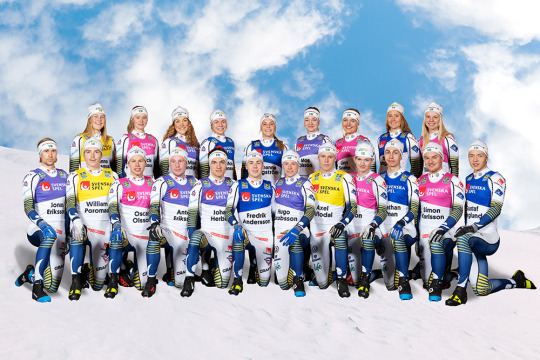
National Team 2019/2020 — Team Svenska Spel
The National Team’s development team, Team Svenska Spel, consists of skiers between age 19-23. The team’s objective is to help those skiers who are between junior and senior, and who are not a part of A-laget.
Juniors at our skiing secondary schools get a lot of excellent training and support in their growth. However, the step from there, to taking a place in A-laget is often very large. For many there are no longer any natural training group to join and it can very easily be so that young skiers are lost after secondary school.
Team Svenska Spel’s purpose is to ease the transition from junior to senior by preparing the juniors for their future as seniors and support younger seniors with continuing excellent training and support after they have left our skiing secondary schools.
Sustainability and patience are key words when working with the team, where drafts are not only based on achievements. We also value growth potential, approach and attitude towards training in addition to results when we choose skiers for the team.
Women
Hanna Abrahamsson, born 2000
Eksjö SOK
Tilde Bångman, born 2001
Offerdals SK
Johanna Hagström, born 1998
Ulricehamns IF
Moa Hansson, born 2001
Landsbro IF SK
Louise Lindström, born 2000
Högbo GIF
Moa Lundgren, born 1998
IFK Umeå
Moa Olsson, born 1997
Falun-Borlänge SK
Alicia Persson, born 1998
Stockviks SF
Emma Ribom, born 1997
Piteå elit SK
Linn Svahn, born 1999
IFK Umeå
Men
Axel Aflodal, born 1999
Offerdals SK
Fredrik Andersson, born 1998
Sollefteå Skidor IF
Gustaf Berglund, born 1998
IFK Mora SK
Jonathan Edman, born 2001
IFK Umeå
Anton Eriksson, born 2000
Sollefteå Skidor IF
Jonas Eriksson, born 1997
IFK Mora SK
Johan Herbert, born 1999
IFK Mora SK
Hugo Jacobsson, born 1997
Falun-Borlänge SK
Leo Johansson, born 1999
Falun-Borlänge SK
Pål Jonsson, born 2001
Strömnäs GIF
Simon Karlsson, born 1999
IFK Umeå
Oscar Olsson, born 1999
Hudiksvalls IF
William Poromaa, born 2000
Åsarna IK
Eric Rosjö, born 1998
IFK Mora SK
*Missing in the picture are Louise Lindström, Johan Herbert, Leo Johansson and Eric Rosjö.
#xc skiing#cross country skiing#ski team sweden xc#team svenska spel#national team#swedish national team#hannah abrahamsson#tilde bångman#johanna hagström#moa hansson#louise lindström#moa lundgren#moa olsson#alicia persson#emma ribom#linn svahn#axel aflodal#fredrik andersson#gustaf berglund#jonathan edman#anton eriksson#jonas eriksson#johan herbert#hugo jacobsson#leo johansson#pål jonsson#simon karlsson#oscar olsson#william poromaa#eric rosjö
0 notes
Photo
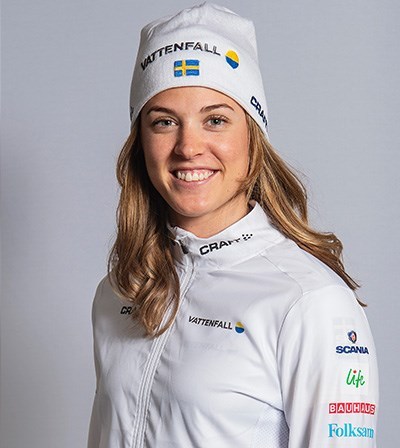



National Team 2019/2020 — Team Bauhaus, Women
Team Bauhaus is for skiers who are on the verge of being included in A-laget. The team consists of skiers who are of age 23 or older. Thanks to being sponsored by Bauhaus the team can participate in all of A-laget’s training camps and gatherings. The skiers also have the same coaches as A-laget.
Anna Dyvik, born 1994
IFK Mora SK
Moa Molander Kristiansen, born 1995
Falun-Borlänge SK
Elina Rönnlund, born 1996
IFK Umeå
Lisa Vinsa, born 1995
Piteå elit SK
#xc skiing#cross country skiing#ski team sweden xc#national team#swedish national team#anna dyvik#moa molander kristiansen#elina rönnlund#lisa vinsa
0 notes
Photo





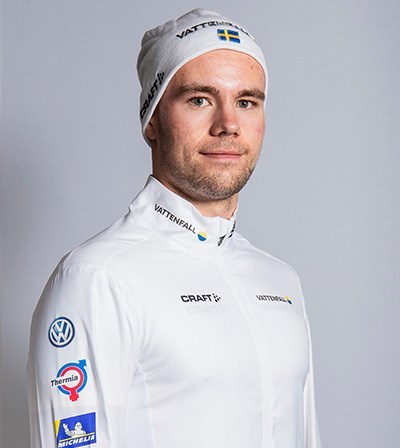
National Team 2019/2020 — A-laget, Men
Jens Burman, born 1994
Åsarna IK
Calle Halfvarsson, born 1989
Sågmyra SK
Johan Häggström, born 1992
Piteå elit SK
Teodor Peterson, born 1988
Sågmyra SK
Oskar Svensson, born 1995
Falun-Borlänge SK
Viktor Thorn, born 1996
Ulricehamns IF
#xc skiing#cross country skiing#ski team sweden xc#a-laget#national team#swedish national team#jens burman#calle halfvarsson#johan häggström#teodor peterson#oskar svensson#viktor thorn
0 notes